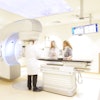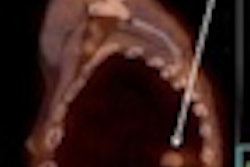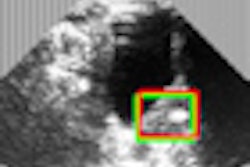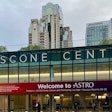MIAMI BEACH, Fla. - High-dose radiation therapy (RT) doesn't improve survival for patients with advanced non-small cell lung cancer (NSCLC), and the treatment used for the past 30 years should continue to be used. This disappointing news was presented on Monday at the American Society for Radiation Oncology (ASTRO) annual meeting.
Dr. Jeffrey Bradley, director of the S. Lee Kling Center for Proton Therapy at the Siteman Cancer Center of Washington University, delivered the interim analysis of the outcomes of 423 patients enrolled in the RTOG 0617 clinical trial. Bradley is also lung cancer committee chair of the Radiation Therapy Oncology Group (RTOG).
NSCLC accounts for approximately 85% of lung cancer diagnoses, with 35% to 40% of patients having stage III locally advanced inoperable disease. Lung cancer is responsible for more deaths on a worldwide basis than any other type of cancer.
The objective of the high-dose radiation therapy arms of RTOG 0617, an ongoing clinical trial that is still accruing patients, was to determine if new radiotherapy techniques and higher therapeutic doses could extend the lives of these patients, Bradley said.
For the past 30 years, the standard dose for treating patients with advanced NSCLC has been 60 Gy. The randomized trial compared outcomes of this current treatment standard with patients who received 74 Gy, an additional seven fractions of treatment.
"We decided to undertake this clinical trial because it has been 30 years since the efficacy of the standard treatment has been reviewed," Bradley said. "We did this after undertaking several phase I and II clinical trials to determine if patients could tolerate receiving a 74-Gy dose, and to determine if toxicities were tolerable. Results from a number of institutional studies looked as if higher doses helped patients live longer."
Interim analyses were scheduled to be conducted at 90-death, 180-death, and 270-death points of a patient cohort of 500. The analysis conducted at the 90-death mark showed that higher radiation dose, whether delivered with conformal 3D radiation or with intensity-modulated radiation therapy (IMRT), provided no benefit.
"At that point, we felt compelled to stop the two high-dose arms of this clinical trial," he commented. "This was a surprising result. The research team is uncertain why the higher dose did not positively affect survival, and the data are still being reviewed carefully. However, based on this trial result, the standard dose of radiation therapy for stage III NSCLC remains at 60 Gy."
At a press conference held earlier in the day, moderator Dr. Tim Williams, a radiation oncologist at Lynn Cancer Institute of Boca Raton Regional Hospital, said that this was a practice-changing announcement. For the past three years, the standard treatment protocol used in his department has been 74 Gy.
"We obviously need to change back to the older standard," Williams said.
Study participants continue to be enrolled in the two arms of RTOG 0617 trial evaluating standard-dose radiation therapy administered at the same time as chemotherapy, with or without the drug cetuximab, said Dr. Walter Curran Jr., RTOG group chair and executive director of Winship Cancer Institute of Emory University.
"Given the high failure rate of current standard treatment for stage III NSCLC, we are hopeful that RTOG 0617's second primary objective will show a survival benefit for these patients," Curran said.



















